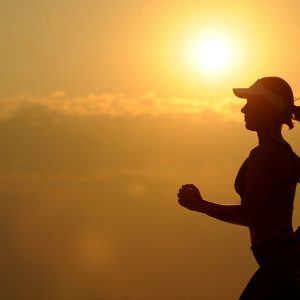
COURSE STRUCTURE
There are 8 lessons as follows:
- Introduction to Health & Fitness
- Exercise Physiology
- Exercise Principles & Cardiorespiratory Programming
- Biomechanics & Risk
- Fitness Program Design
- Delivering a Fitness Program
- Safety, Injury and General Wellbeing
- Fitness Programs for Special Groups
AIMS
- To explain the nature of the health and fitness industries.
- To explain the relationship between the body and health, fitness & exercise, with reference to physiological processes.
- To explain the relationship between the body and health, fitness & exercise, with respect to risk involved in exercise.
- To evaluate body movements during different exercises.
- To design fitness programs, which are both safe and effective, to fulfil specified requirements of an individual.
- To deliver a fitness program to a small group of clients.
- To manage the wellbeing of participants in a fitness program, including safety and injury.
- To design fitness programs, which are both safe and effective, catering to needs of special populations (including weight control programs and programs for handicapped/disabled persons).
WHAT THE COURSE COVERS
- List the different types of health and fitness organisations and businesses offering services in your locality.
- Explain the philosophical basis of health and fitness in a workplace you are familiar with.
- Explain legal implications of providing fitness services in a gymnasium in your locality.
- Explain official systems of accreditation, registration, and licensing which relate to providing services in the health and fitness industries, on a local, state or national basis.
- Explain the status of professionalism, in the health and fitness industry.
- Develop guidelines for ethical behaviour of staff in a health and fitness industry workplace.
- Describe the history of fitness training in your country.
- Explain a physiological response to a balanced exercise program over a period of months, in an adult who has not regularly exercised for many years (i.e. what happens to the adult over the time period of the exercise).
- Indicate the likely response of the following different body parts to different levels of exercise:
- Heart
- Lungs
- Back
- Legs
- List physical symptoms, which can result from a lack of exercise.
- List risk factors associated with irregular exercise, for different types of people.
- Explain the mechanics of body movement during three different exercises, using illustrations.
- Analyse the movements observed during the three different types of exercises, performed by the three different people.
- Explain the general benefits of regular exercise, for 3 different demographic groups(eg. children, teenagers & young adults; or teen males, teen females and elderly).
- Explain the components of fitness in a typical young adult.
- Explain the different goals of training including cardio-respiratory fitness, flexibility, strength, and endurance.
- Apply the principles of training, to design an exercise program to suit your lifestyle, resources and aims.
- Design instructions, for two different series of stretching routines, for different purposes.
- Explain how the principles of leadership may be applied, in a fitness program.
- Explain how the principles of learning apply, in fitness program.
- Analyse different motivational techniques being used by a leader, in a fitness session which you observe.
- Survey members of two different health/fitness clubs to determine differences in attitude towards services being offered.
- Develop a checklist of criteria which are critical to customer satisfaction in the delivery of a fitness program.
- Demonstrate the leading of one or several people through their first session of a 30 minute fitness program, which they are unfamiliar with.
- List different options for screening techniques, to evaluate health in a gymnasium.
- Discuss symptoms of poor condition, including poor fitness, sickness and injury; which you observed in the video/TV program where different people are exercising.
- Develop safety procedures for a specified fitness setting.
- Specify a fitness injury you are familiar with, then recommend an appropriate recuperation process for that injury.
- List first aid facilities which should be available in two different specific types of health and fitness facilities.
- Compare different weight loss programs.
- Explain the general benefits of regular exercise, for different demographic groups including:
- Paraplegics
- Elderly
- Overweight people
- Design a weight control program for a specific person.
- Design a healthy weight gain program for a specific person.





